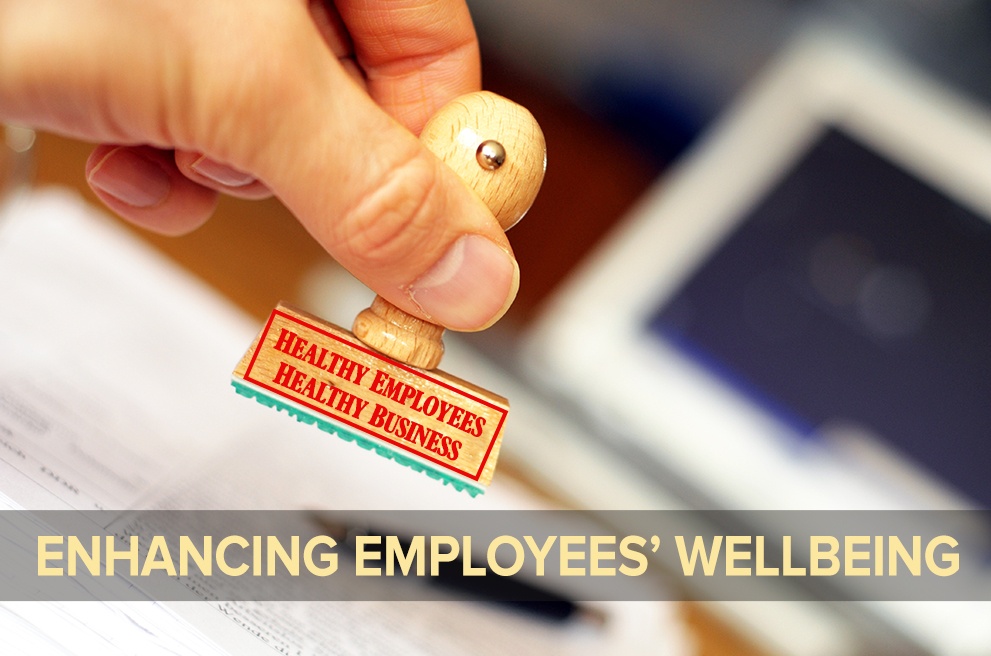This is the third entry in our three-part series on how to accelerate employee engagement. If you missed parts one or two, be sure to view them here (Part 1 / Part 2) prior to reading on.
As we’ve previously discussed, achieving total engagement is not an easy task. However, selecting the right candidates to activate your workforce and embracing employee strengths are the first two steps in uncovering real results. The final action we’ll discuss today revolves around the health and happiness of your employees, which can ultimately play a rather decisive role in your team’s overall effectiveness.

Action 3 - Enhance Employees’ Wellbeing
With healthcare costs on the rise, more employers are investing in their ability to help the workforce maintain an active, healthy lifestyle. In looking at the correlation between employee engagement and worker wellbeing, Gallup discovered that when an organization maintains a focus on both, it holds long-term benefits by lowering medical costs and accelerating performance outcomes.
The connection between engagement levels and physical health
How does this happen? There’s a direct connection between engagement levels and physical health. The more comfortable an individual feels not only in their skills but in their position within the company, the more direct an impact on health issues such as high cholesterol, diabetes, high blood pressure, depression and even obesity. That’s because when one holds a more positive outlook on their position, they are less likely to succumb to stressors within their daily lives. Gallup found that highly engaged employees maintain healthier diets and more active lifestyles because they value their worth and don’t want to jeopardize their ability to operate at the highest levels possible.
Lowering health costs while boosting performance
When it comes to healthcare costs themselves, Gallup discovered that employees who are thriving in their overall wellbeing have 41% lower health-related costs, compared those employees who are struggling and 62% against employees who are suffering. These benefits don’t end at the office door either. When employees are happy in their positions, they tend to be happier overall. That’s because those positive emotions carry over into other realms of their lives and have a direct impact on how they carry themselves and deal with stressful situations.
Leaders' role in improving well-being
For leaders, the key task when it comes to improving wellbeing is to find the correct method of enhancing performance. Where some supervisors might ask their workers to compartmentalize different portions of their lives, great ones inspire their workers to invest the same amount of energy in improving each and every element. That’s why leaders should consider the five following insights when creating a plan to address the specific needs of their workforce:
- Make wellbeing an organizational strategy—much like other organizational outcomes: Healthy behavior catches on, because daily interactions influence daily choices. So, when you act as a positive influence within a team, those around you are more likely to embrace similar goals.
- Communicate a commitment to wellbeing consistently in all of the programs the company offers: You may be willing to help your employees, but how familiar are they with the facts? Be open about your available programs and improve them based on the feedback you receive. Never try to force-feed your team a plan they do not care for.
- Hold leaders accountable for wellbeing programs available to employees: Again, evaluate the programs you offer and also strive for improvement based on the needs of your teammates.
- Consider how to embed activities to increase wellbeing in individual development plans and goals: Actively and openly encourage those around you and share your goals. Create team-based activities, get involved and remain a positive presence in the lives of your workers.
- Set positive defaults for making healthy choices: Do you offer office snacks to your workers? Make sure they’re conducive of a healthy environment. Offer to contribute to their health savings accounts and take steps in helping them pursue the lives they want to live. The more effort you make, the more it will become routine for everyone.
So, if your company is looking to increase engagement at every level, the three actions we’ve discussed can make all the difference in how quickly you get the program you need in place. The more effort you make in putting the proper actions to work, the better you can openly enhance employee engagement and provide the tools, environment and support your workforce is clamoring for. Never forget that genuine effort is always rewarded, even if it’s done at a corporate level.
If you’d like to know even more about how employee engagement can work for you, be sure to check out our previous blog posts on Improving Employee Engagement.

At C.A. Short Company, we are your partner for increased employee engagement resulting in increased performance outcomes to grow your bottom line. Our process and research-based platform helps you engage your team in order to increase your bottom line, motivate your staff to the benefit of the entire organization, and reward your people for the positive changes they make. To request a Complimentary Consultation, please click here.


.jpeg)

.jpg)



SHARE